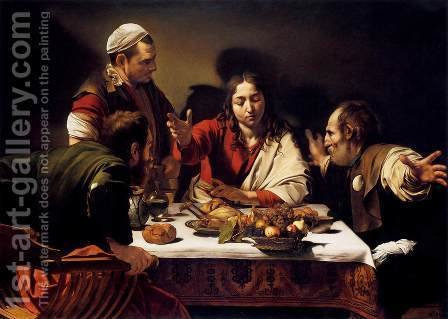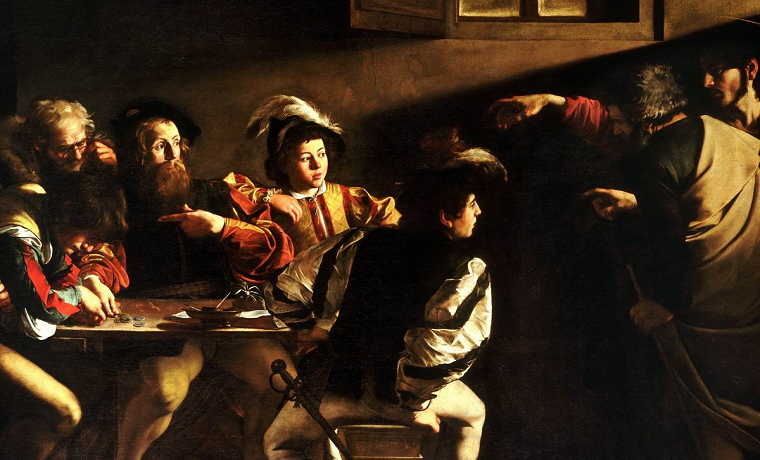Michelangelo Merisi da Caravaggio was an Italian painter whose parents left him alone at the meager age of 11. He took to painting at this young age and went to live in Milan as an apprentice with another painter. As a painter, he gained prominence in Rome, especially because of his tenebrism technique.
But in Rome, Caravaggio got into a bar fight and killed a man, after which he fled Rome. The most influential painter in Rome, Caravaggio, died in 1610, 39 years after he was born. Caravaggio may have lived a short life, but his artworks tell a different story. Let’s look at some amazing facts about his work, which are timeless and spectacular.
Caravaggio Artworks

At a time when the Protestants were heavily barging on the doors of Catholics to convert and follow the rules of reformation, to tackle the reformation campaign, the Catholics turned to Caravaggio.
Not only painting, but they wanted to create an impression of Catholicism dominance with the help of all forms of art. By using theatrics and drama in the paintings, the reformists wanted to create a culture that welcomed everyone with no fear or favor.
One of Caravaggio’s paintings, The Adolescent Bacchus, was Caravaggio’s earlier works. But after completion, this painting was sort of forgotten only to resurface 200 years later, in 1916. Post this find, and to this day, Bacchus remains one of the most prominent paintings by Caravaggio.
Another interesting thing about this portrait is that Caravaggio has made a self-portrait in the wine carafe. This was also not discovered and won’t be visible straight away. You will have to pay a lot of attention to the painting to see the portrait.
It is no surprise that Caravaggio liked painting for the Catholics and on the biblical themes. But he was genuinely interested in these paintings, which is evident by the way he presented every scene.

The kind of detail and visual explanation provided by these artworks is not seen anywhere else. Artworks like Doubting Thomas, The calling of St. Matthew, and The Taking of Christ help us understand his appreciation for the counter-reformation works.
Paintings Inspired by his Real-Life Events
Caravaggio was a troublemaker himself. He was caught many times fighting with other painters and people and also had to spend some time in jail and exile. His runs and exiles were also visible in some of his artworks.
The most prominent one is Resurrection. Although the scene in the painting shows Jesus Christ escaping from the tomb, he was held in the middle of the night. The way Caravaggio was on the run due to his recurrent brawls and fights, he reflected the same in some of his paintings.

His Unorthodox Way of using Models
Curators say that Caravaggio’s paintings were as provocative as the painter himself. Caravaggio could create his masterpieces not by calling some noble patriots, but he picked up people from the street and painted their life as they were living them without any filters.
Moreover, he was not a very big fan of the academics associated with painting. His works bypassed these aspects and imbibed diversity and the raw aspects of nature. Due to his painting style, the controversial painter did not miss any detail of the subjects and their surroundings. With such a painting style, Caravaggio’s painting was as realistic as it gets.
Unique Combination of Light and Shade
Caravaggio’s usage of light and shade to create a unique effect of the painting and the main character was extraordinary. Even though the scenes he creates were standard and normal, with the usage of light, Caravaggio was able to infuse life in his works.

Along with a unique style, he used light to provide form and create space in the painting. One of the best examples of the usage of light and style is Supper at Emmaus.
Due to such a unique mix of light and shade, Caravaggio created a dramatic lightning effect while executing powerful storytelling.
He Painted Himself in Several Paintings
From his painting, the Young Sick Bacchus to Dave with the Head of Goliath and The Taking of Christ, there are several examples where Caravaggio represented himself in his paintings.
So, there are two ways in which Caravaggio recreated his life in his paintings. One was by using biblical events to show his plight, and the other was using normal situations to paint himself. Sometimes Caravaggio was seen in the abstract form, while in others, he was visible or hidden.
Conclusion
Caravaggio as a painter, claimed himself to be above everybody. He was heard talking less about the painters of the past and his contemporaries. He may have died early, but Caravaggio left a great impact on art and contributed to several art movements. A short-lived life but made an impact on the world like never before, Caravaggio was an inspiration for some while a rival for others.

